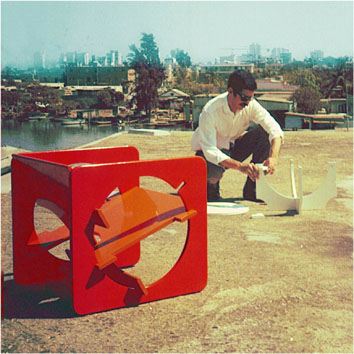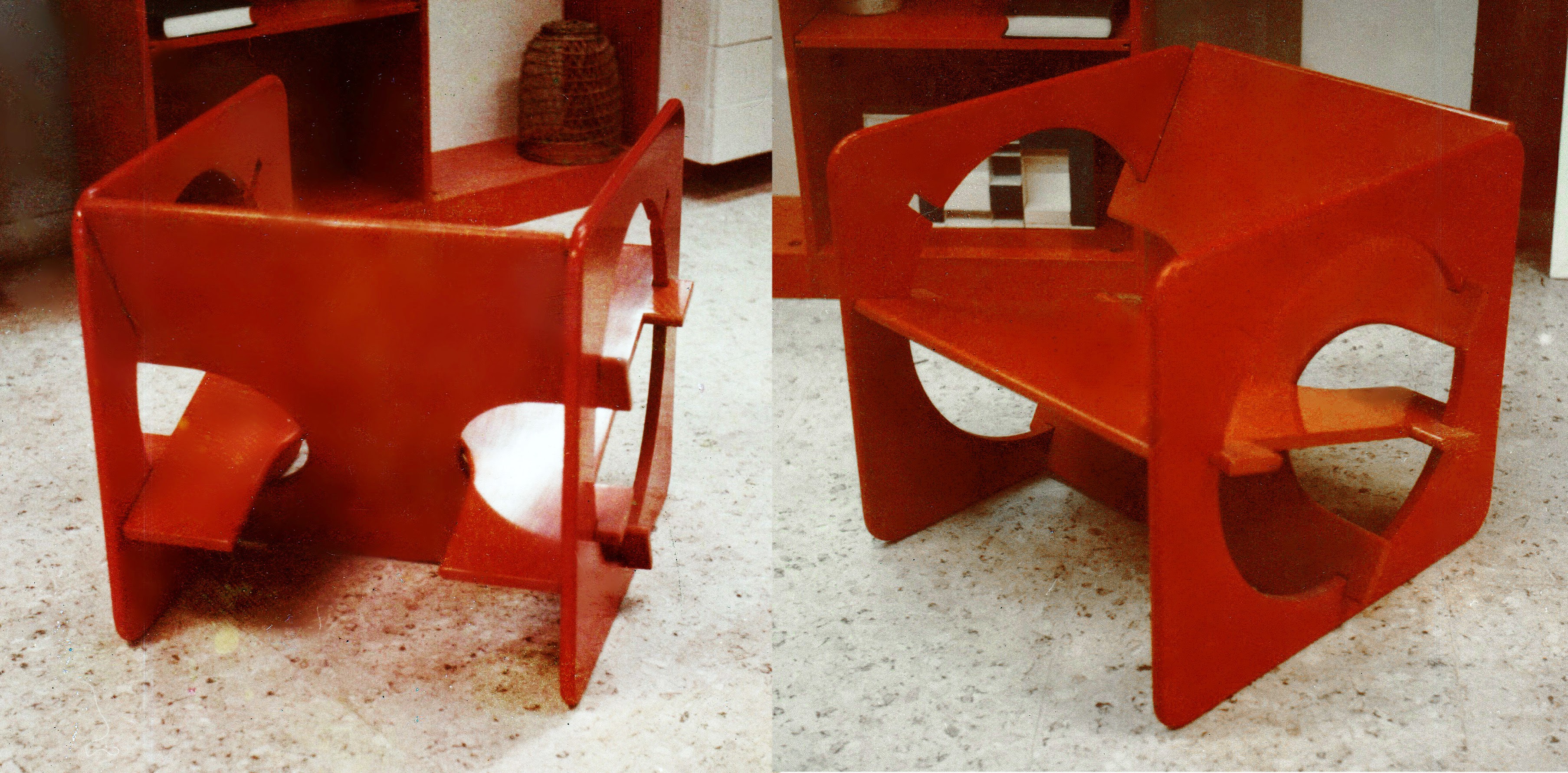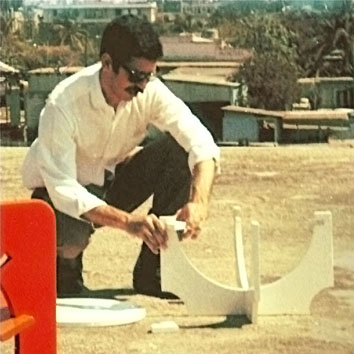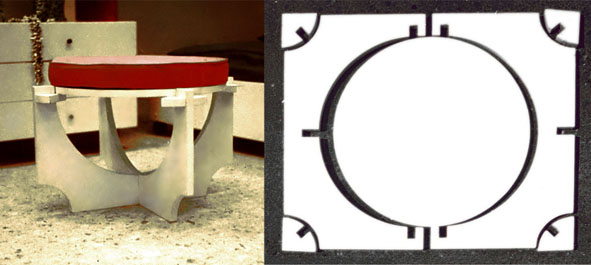| by Reinaldo N. Togores | Versión Española |

For the late Sixties Cuban furniture industry the idea of furniture designed to be assembled by the user and packaged in flat boxes optimizing their storage and transportation was completely unknown. Those who ran the industry were subordinate employees of the old factories producing "style" furniture aimed at the local bourgeoisie. They never understood the simplicity and economy of means demanded by modern industry for mass reproduction. Aware of this, Enrique Escalona, founder in 1967 of the Ministry of Light Industry sought to gather in his Products Study Department and the Industry's R&D Group a team of architects and designers that shared an innovative vision of what should be the Cuban light industry's development.

IKEA at Kungens Kurv.
In the Products Study Department a group had been created under the direction of Iván Espín, while I was trusted with the direction of the Furniture Enterprise's R&D Group. A great help for all of us was the presence, within Ivan's team, of Architect Eva Björklund who brought with her from Sweden the experience of Swedish design. And in special IKEA's, as displayed in its recently opened (1965) Kungens Kurva store in Stockholm which I had the opportunity to visit with Eva in 1969. Its colossal circular showroom was filled with their innovative flat packed self-assembly furniture.
A technology particularly suitable for user self-assembly and packaging in flat boxes -the IKEA way- was that of plywood panels assembled using slotted joints which made putting them together possible without the use adhesives, screws or other accessories. Plywood was a material then being received in large quantities as part of the Soviet's subsidy of Cuban economy, in addition to that produced by a small pre-Revolutionary industrial capacity. The lack of security regarding other supplies made the possibility of joining the panels this way seem to us a decisive aspect in favor of this technique.
 Eva Björklund. "Little Monster" Series, 1968.
Eva Björklund. "Little Monster" Series, 1968.
Cutting pattern for the series' components.
From 1968 is the set designed by Eva which she affectionately called "Det Lilla Monstret" i.e. The Little Monster. It was designed so that a chair and a coffee table could be obtained from a 1200 by 1800 mm plywood panel with a minimal waste of material.
 María Teresa Muñiz Riva. "Jigsaw" children's furniture system , 1969.
María Teresa Muñiz Riva. "Jigsaw" children's furniture system , 1969. |  |
Also within the Products Study organization the Designer Maria Teresa Muñiz Riva created, for the kindergarten furniture program, a system of plywood panels that constituted a real "Jigsaw" puzzle with which it was possible to assemble a variety of chairs, desks, rocking chairs and doll cradles. For this purpose the slotted joint system was also employed.
 Heriberto Duverger, Yabyum chair, 1971.
Heriberto Duverger, Yabyum chair, 1971.An innovation in the geometry of the slots, which taking the shape of a circular aperture allowed some mobility in the seat and backrest's tilt angle, was the contribution of Heriberto Duverger with a chair that, by the fashion in which its panels were intertwined, deserved the Tantric name of "Yabyum".

Stool's assembly.
Another proposal in the line of material frugality, ease of assembly and flat packaging was my design for a stool the parts of which were obtained by cutting a plywood rectangle with hardly any waste of material.
Of all these designs, only the "Jigsaw" children's furniture series came to be industrially produced, as they were included in the furniture for the Experimental Nursery-School intended for the Havana plastic footwear factory employees children. In that case the possibility that they could use those pieces of furniture built to their own scale also as a way to exercise their manual skills was considered a positive contribution to their education.
But the compact packaging and ease of assembly presupposes a system in which each person could decide which items should be used to set up a domestic environment to his liking. Something not included in the purposes of an industry aimed at repeating identical furnishings to fill those serially prefabricated spaces in the Gran Panel buildings, without any concession to individualism.



 Reinaldo Togores. Slotted joint assembled Stool. To the right, its component parts, 1971.
Reinaldo Togores. Slotted joint assembled Stool. To the right, its component parts, 1971.